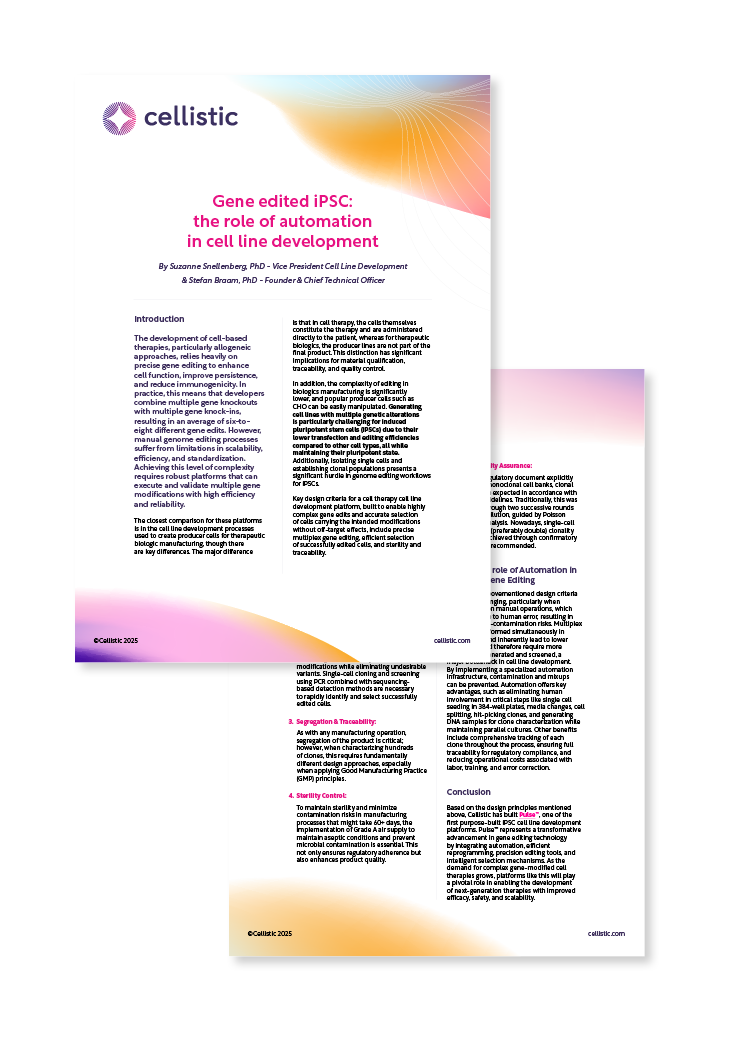Precise gene editing is crucial for the development of cell-based therapies, particularly allogeneic approaches, where enhancing cell function, improving persistence, and reducing immunogenicity are key objectives. Developers often face the challenge of combining multiple gene knockouts with knock-ins, resulting in an average of six to eight gene edits. However, traditional manual genome editing processes are limited in their scalability, efficiency, and standardization. This whitepaper, authored by Cellistic's Founder and Chief Technical Officer, Stefan Braam, and Vice President of Cell Line Development, Suzanne Snellenberg, examines how Cellistic has implemented automation to address these challenges, highlighting the need for robust platforms capable of efficiently executing and validating complex gene modifications.
"The closest comparison for these platforms is in the cell line development processes used to create producer cells for therapeutic biologic manufacturing, though there are key differences. The major difference is that in cell therapy, the cells themselves constitute the therapy and are administered directly to the patient, whereas for therapeutic biologics, the producer lines are not part of the final product. This distinction has significant implications for material qualification, traceability, and quality control."
Read the full article on The Role of Automation for gene-edited iPSCs in Cell Line Development


